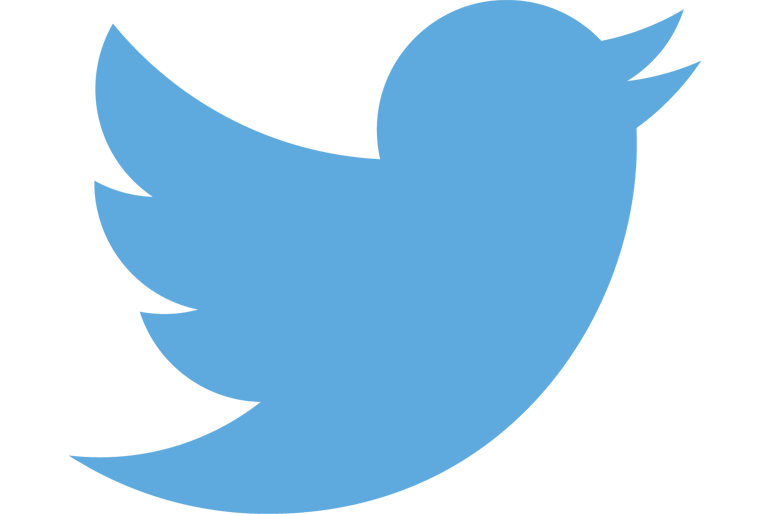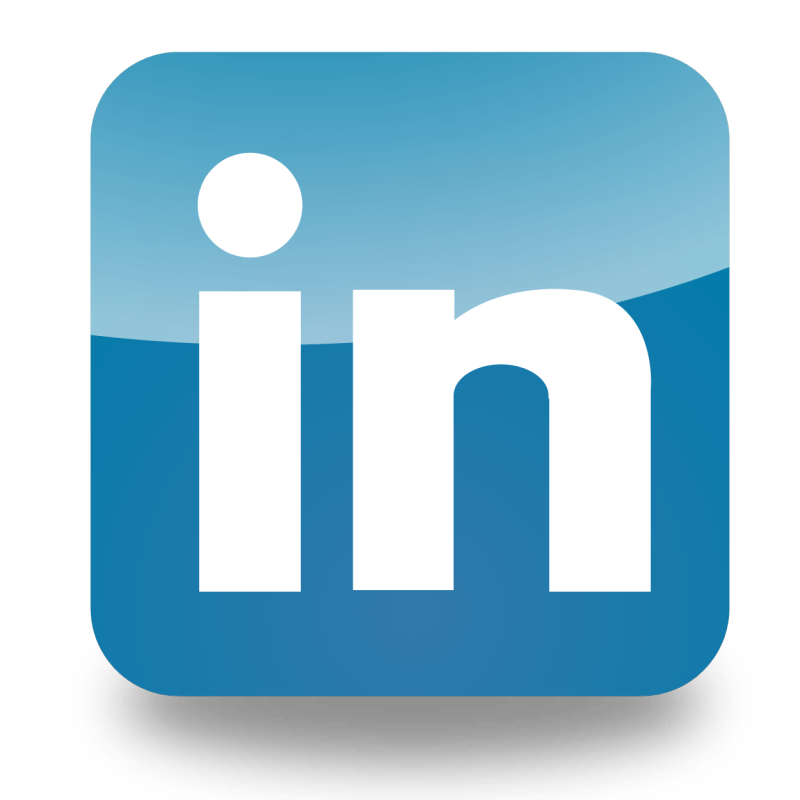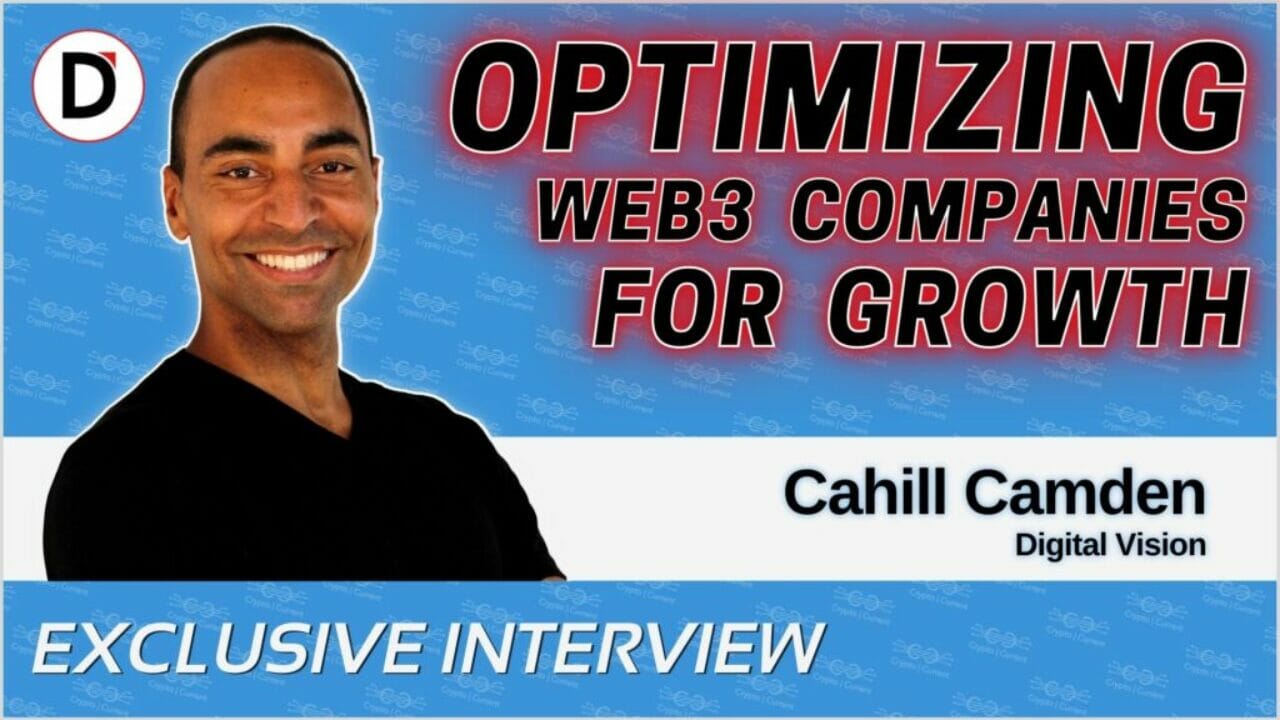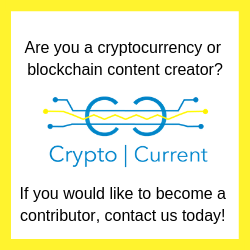Cahill Camden on Growing Web3 Initiatives with Digital Vision (Episode 322)
Cahill Camden joins us to discuss on Growing Web3 Initiatives with Digital Vision.
Cahill Camden is the CEO of Digital Vision Media Group, an agency that helps web3 and technology companies optimize for growth. As the Fractional CMO for Coinberry and Blockchain Foundry he helped guide both companies to successful multi-million dollar exits in 2022. He’s a Forbes contributor and a bestselling author.
Links:
https://www.linkedin.com/in/cahillcamden
Want more resources around this podcast? Keep up to date on the latest articles here.
The following transcript was created using artificial intelligence. There will be some grammatical errors below.
00:00:17:24 – 00:00:37:22
Richard Carthon: Hello Everyone, welcome to another episode of cryptocurrency, your host here at your car fun. And today I have a very special guest with you today to talk about something that is very timely and something that is very essential for all the businesses that are building in Web3, especially right now during this bearish market, we have Cahill Camden , who’s with Digital Vision Media Group. How are you doing today?
00:00:38:05 – 00:00:41:22
Cahill Camden: I’m great, thank you. And thanks for having me on the on the show. Appreciate it.
00:00:42:26 – 00:00:55:04
Richard Carthon: Absolutely. Before we kind of dive into what people can be doing to help, it’s a marketing grow. There are different brands and businesses and communities. Let’s first dive into a little bit of information about yourself. Can give some background.
00:00:56:03 – 00:00:57:19
Cahill Camden: Sure. Where do you want me to start?
00:00:59:22 – 00:01:00:09
Richard Carthon: Wherever you want.
00:01:00:19 – 00:01:42:09
Cahill Camden: All right. So I guess let’s let’s start I guess when I got into crypto, because I think it’s important for anyone who’s new into crypto or who’s been in the space for a little while to kind of understand. I got into crypto. Back in 2017. And I thought I was late. I thought it was really late. Some friends had been telling me about it since 2014. 2015, I would say it was 2015, and I just didn’t believe them. I didn’t get into it. And so I went down the rabbit hole in 2017, pivoted our entire agency towards really focusing on blockchain based companies, web3, as it’s called now, and and just went down the rabbit hole from there.
00:01:42:18 – 00:02:00:11
Cahill Camden: I’ve done mining, I’ve done marketing for different crypto companies, exchanges, protocols, like you name it. I’ve probably worked with them. And I think for anyone who’s kind of new to the space right now, it’s still early. I think that’s just it’s still really early. I think there’s a lot a lot of room to grow.
00:02:01:22 – 00:02:09:25
Richard Carthon: Definitely. So that first interaction within the Web3 space, like what was it for you? Like how did you first hear about it and what made you decide we need to be in this space right now?
00:02:10:27 – 00:02:41:21
Cahill Camden: So a friend of mine had was it was in the process of building a blockchain based company, and he had asked me for my marketing, my marketing help marketing advice. And so that’s how I first really decided to get into it. But I had heard about it a couple of years before with the infamous Silk Road and with, you know, you hear about Bitcoin on on, on the interwebs. And yeah, I’d heard about it. I didn’t believe in it. I didn’t trust it. And then when my friend was like, Hey, I can just help us with some marketing. So, yeah, okay, sure.
00:02:41:23 – 00:02:51:06
Cahill Camden: Let’s, let’s go. And then I started to get way more into it. And, you know, we’re in the Bitcoin whitepaper. Then eventually in this area, my white paper just went down. Right.
00:02:52:27 – 00:03:23:13
Richard Carthon: Yeah, it’s a slippery slope once you get in. You just want to get more and more as much information as possible and figure out like, where is it that you can kind of get behind this new and emerging technology and start to grow and expand from there. So you start to learn about this, you read the right papers and you decide to, you know, first help out with helping your your friend who’s trying to build a blockchain tech company. How did you then continue to grow and expand from there? How did you start to work with various companies in the space?
00:03:23:28 – 00:04:01:17
Richard Carthon: Yeah, great question. So we helped them with their growth. We ended up doing the world’s largest cryptocurrency lawsuit, their PR. So, you know, friend of mine was suing a stock exchange for half of $1,000,000,000. So we did that. That got us some that got us some credibility. And then we started working with other companies during the IPO. I feel boom. So we started working with some companies there. And then through our crypto Winter, we started working with some protocols and other companies in the blockchain space that works up to interesting things to work on interesting projects.
00:04:01:27 – 00:04:07:19
Cahill Camden: And so it just kind of snowballed from there. So referrals and, you know, just progression and from doing good work.
00:04:09:05 – 00:04:23:04
Richard Carthon: So let’s start with the question that a lot of people probably top of mind as you talk to someone who is working in the marketing and growth space. How does one grow right now in this moment during a bear market?
00:04:24:02 – 00:04:57:27
Cahill Camden: Yeah, great question. I think. Really? It’s it’s it’s going to come down to a few things. So, yes, you’ve got to have a product that works. Okay. So that’s just table stakes. But really, right now what we’re seeing is we’re seeing the advertising market have shifted a lot. So for better and for worse, depending on the platform that you’re on. So that’s not necessarily the best place to to grow. It does help, of course. But I think what’s what’s really, really important right now is communication.
00:04:58:11 – 00:05:34:09
Cahill Camden: And so communication in your community. Huge, like huge, huge, huge. And it’s not just running games and building your Discord Channel or Telegram channel. It’s like real, genuine communication, educating your audience about what you’re doing, your roadmap, how things are going. That’s super important. And then as well, communication. We’ve seen mass communication on it and on in blogs and newsletters. That’s huge. Again, you’ve got to you’ve got to keep on educating your audience and keeping you’ve got to keep them engaged with what you’re doing.
00:05:34:29 – 00:05:55:01
Cahill Camden: Those are the those are the main things we’ve seen. Yes, of course you can do Twitter, you can do Facebook, Instagram, Tik Tok, the whole nine yards. But really, communication is what it comes down to. And if you’ve got a strong community and especially in the winter, then when you when you when you when when it’s bull market, you’re going to you’re going to make a you’re going to make a lot of success.
00:05:56:00 – 00:06:27:00
Richard Carthon: Definitely. And communication is always going to be essential to any business. And as you are building out that that that brand and that community, keeping everyone up to date on what’s going on, good or bad, indifferent, letting them know just so they feel like they are always up to date is is very crucial. And you’ve been in through a couple of these bear markets now since you’ve been in this space as long as you have the companies that you’ve worked with that have been able to come out on the other side of some of these bear markets into bulls cycles.
00:06:27:14 – 00:06:37:02
Richard Carthon: What were some of the keys to the success of being able to build during builders times? Okay, bear markets so that you can ride the successes of when it’s full time?
00:06:37:16 – 00:07:12:25
Cahill Camden: Yeah. So, Richard, you mentioned you mentioned something just in passing. You know, to be true. That’s why it was just like kind of nothing to in communication, both on the good and the bad. And that’s one thing that I think a lot of companies miss, right? Well, at the end of the day, no brand is perfect. We can try to be, but no brand is perfect. And I think what a lot of founders with a lot of companies that are building try and do is they try and hide. They try and hide some of the flaws. They try and hide some of the the quote unquote, bad things that they don’t want people to know about.
00:07:13:07 – 00:07:51:03
Cahill Camden: And that’s part of communication that makes you human. That’s part of what builds trust is when you can say, hey, look, this is something that we’re struggling with. This is something that we’re working to overcome. Here’s how we’re doing it. That type of communication is super important. And so, like you like you mentioned in bear markets where there’s a lot of challenge and there’s a lot of uncertainty, people are not super trustworthy of the brands that may be in the market. Especially when we see huge scams and crashes, you know, like Mike Luna and, you know, some of the other challenges in Defi.
00:07:51:09 – 00:08:24:11
Cahill Camden: People are skeptical. And so I think communicating both the good and the bad and how you’re how you’re looking to overcome some of the challenges while you’re building is is super important versus just communicating about the good stuff and only communicating when you have good information, which means maybe you’re going to be quiet for three or four months. That’s not a good idea. I don’t think I think you need to constantly communicate and need to constantly be be showing your your community like, hey, here’s what we’re doing to really push forward and to build wealth in this in this downturn.
00:08:25:13 – 00:09:02:05
Richard Carthon: Yeah, I think that’s been the flow of a lot of communities that unfortunately haven’t survived or are in really big trouble during this bear market is they go radio silent until the news is accumulated so high that is the worst possible news. And now it’s damage control instead of communicating, hey, what’s going on? So that you can kind of get in front of it and actually maybe even have your community step up to help solve the problem. And I think just by you build this community to trust you. So I wouldn’t you be able to trust that they will be able to bear with you as you try to figure this moment in time out?
00:09:02:26 – 00:09:34:14
Cahill Camden: Right. 100%. And, you know, we’ve all seen it. We’ve all seen it with with some of the larger players in the market where they’re communicating good news right up until the point of failure or until the point where the rug is pulled and people just feel just feel taken advantage of. And I think, again, the good companies and the good the good Dallas, the good organizations. Protocols that are going to be building in this time. They’re the ones who are communicating consistently with their audience.
00:09:34:21 – 00:09:50:20
Cahill Camden: Good and bad. Here’s the challenges. Here’s how we’re overcoming the challenges. This is something that I always encourage. The companies that we work with to to do is to communicate in that open and honest way. Now, you’ve got to obviously decide how much you’re going to share. Of course,
00:09:52:10 – 00:10:06:13
Cahill Camden: opening necessarily of all the Treasury reports and whatnot. Maybe you are depending on the Dow. But it’s just that direct, honest communication, like, here’s what’s going on. I think that really builds a strong community which can weather the storm. Right.
00:10:07:13 – 00:10:12:18
Richard Carthon: Right. And just to build on that, there are a lot of different ways that.
00:10:14:07 – 00:10:51:13
Richard Carthon: Different companies can communicate. So of course, you have the social channels, you have discord, you have newsletters, you have all these different places. And for some people, you would rather go to one place over another. Right. So I have no problem with certain communities that I read. I get my information on a Twitter update for others as a newsletter. For others, it’s on Telegram. I will go on Discord, but discord feels very overwhelming for me. So I don’t personally spend a lot of time there. But there are some communities where all they spend their time is on discord. How would you say? Finding different channels of communications is also important as you grow and build with your community.
00:10:51:24 – 00:11:38:05
Cahill Camden: Yeah, you brought up some really good points there. I do think a lot of people find this overwhelming, right from the amount of direct messages and spam that you get to just the the overwhelming number of notifications. If you’re part of multiple groups, it’s like the firehose of content. Then you’ve got Twitter and all the rest. So what we do with with the companies that we work with is we test things out. We look at the actual data behind Discord, behind Twitter, behind newsletters, behind blocks, and we say, Hey, look, you’re getting more interaction, more communication on X, Y, and Z platforms than you then you thought was was actually happening.
00:11:38:09 – 00:12:19:12
Cahill Camden: So we should focus on those platforms. That’s not to say that we should completely cut off the other ones. That might be a scenario, but we focus on the traction channels of the platforms that have the best data. So to your point, for example, let me give a real life example. You know, discord is obviously a channel where discord and everyone’s like, Oh, we’ve got to be on Discord Telegram. Yes. You’ve got to have a Discord channel. Let’s just say that that’s table stakes. But one of the the the channel, the channels that we’ve seen that has done extremely well with audiences is the old school newsletter, email newsletter once a week, even once every two weeks.
00:12:19:14 – 00:12:50:10
Cahill Camden: And it’s like, hey, here’s our updates, here’s some education, here’s some insights, your bounties, here’s where you can go and find out more information. Here’s where you can communicate with us on a daily basis. A discord. And hey, we’re just we’re checking that. We’re keeping you abreast of everything that’s going on. And that has performed really, really well for for most of our clients. And so for all of our clients, actually. And so that’s one of the one of the areas that I would say if you’re if you’re looking to communicate better news that are up and running plus.
00:12:51:12 – 00:13:24:18
Cahill Camden: Plus, we also have to remember that when you’re building your when you’re building your communication on other platforms like Facebook, Twitter, there’s always a risk that Facebook, Twitter or whatever platform might be to turn you off. And we’ve seen that happen to clients where clients have quote unquote, violated some kind of rule in the terms of service that maybe was changed two months ago and all of a sudden they’re blocked from accessing their 20,000 users on Facebook.
00:13:24:27 – 00:13:48:05
Cahill Camden: And it’s a moment that you have to try and overcome. Whereas when you build a newsletter, you’ve got email addresses. Even if they’re anonymous, you’ve got email addresses, you control that channel. And really you can always take your email addresses to a different place and utilize them. So those are those are some of my tips there in terms of communicating with your audience.
00:13:49:00 – 00:14:33:08
Richard Carthon: I definitely appreciate that insight. And just to add on to it, I think another thing that people forget about as it relates to newsletters is when you’re bringing in and growing these these different communication channels, you’re bridging the gap between Web 2.0 and 3.0 and less with the world of Web 3.0. Most of them live on Telegram, Discord and Twitter. However, most of 2.0 still reads a lot of newsletters still on Facebook and other places. But ultimately, like you’re saying with the newsletter piece, people are very adapted to getting updates from various companies that they follow a newsletter and they’d like that it’s not coming every single day, multiple times a day, if it’s once a week or once every two weeks, that feels like an acceptable amount of notifications I’m getting.
00:14:33:10 – 00:14:46:09
Richard Carthon: However, like for some people, if they go in there, feel like they’re getting constantly barraged with all these messages that they ultimately don’t want, they tune out. And now that’s not really what you want from building your community either. So I think finding a way to meet your
00:14:47:27 – 00:14:55:06
Richard Carthon: community where they like to receive their information is part of the challenge, but also essential to growing your user base where you want it to go.
00:14:55:18 – 00:15:33:28
Cahill Camden: Your hundred percent right. And that’s exactly what we talk about. And you can see that when you look at engagement rates on discord. But you can actually you can track it, you can see the data and you’ll see that you have almost certainly a very small group of really active users. There will be some users that are kind of active and the majority of people are inactive and some of them are maybe just they’re lurking on the side just watching. But again, when you’re getting barraged, like you said, with dozens of messages every single day from a single community and you have five, ten, 15 communities on your discord, it’s like it was not paying attention.
00:15:34:00 – 00:15:34:21
Cahill Camden: That’s impossible.
00:15:35:22 – 00:15:42:16
Richard Carthon: Right. Everyone only has so much attention every day. And a lot of your community, as they jobs, has other things that they have going on. And so
00:15:44:03 – 00:16:24:14
Richard Carthon: I think being aware of that, I think sometimes like obviously us builders in the space, we get so locked in on our product, our company or Dow or whatever it is that you lose sight of like, oh yeah, like people have a lot of other things going on. Like maybe they don’t want to get all of this information all of the time. And so I think it’s just a good reminder and a good refresher. But but something else that I want to kind of ask and kind of go in another direction that I want to head is after you’ve now grown your audience, now that you’re communicating with them and you’re keeping them up to date on what’s going on, good, bad or indifferent, what are other ways and other things that people should be thinking about as they continue to grow their audience and as they continue to market to new people to bring into their community?
00:16:25:27 – 00:17:08:10
Cahill Camden: Good question. I think we’ve got to we’ve got to remember that there’s growth and then there’s community retention. Right. So it’s not just it’s not just enough to have a lot of users join your newsletter, join our Discord or telegram. You’ve got to have that retention, that engagement. And so what I would really recommend, you know, founders, CEOs, startups look at is make sure that you’ve got you’ve got that retention when you’re doing a marketing so that again, when things become good and you open up bounties, you you get ask people to help you out with marketing.
00:17:08:20 – 00:17:25:02
Cahill Camden: You’ve got a good engagement rate with your current audience, whatever attraction channel that might be, Twitter, discord, you know, newsletter. You’ve got good engagement. And so people are willing to help you out, do things with you. So that’s that’s what I would look at.
00:17:26:18 – 00:18:01:11
Richard Carthon: Yeah, and I think that is essential right now is the retention piece. It’s one thing to always be feeding the top of your funnel, but if by the time they get to the end, if they’re not sticking around, then you’ve got to do a deeper dive into like, what is the real value that you’re bringing to your community? And if you’re not truly driving what you thought that was, it might be time this be slowing down growth and focus on, like you’re saying, more on that retention side. So I think that is a really good and helpful reminder as you look across the world of Web3, everything’s expanding, of course, and Nfts are continue to grow.
00:18:01:13 – 00:18:21:07
Richard Carthon: The metaverse is now getting more and more plays and there is a lot of various ways that someone can come into the community of Web3 and kind of like pick out their niches. Before we kind of got on the conversation today, you told me that privacy was something that was very important and essential to you. Can you kind of expand on that?
00:18:21:19 – 00:18:39:10
Cahill Camden: Sure. So I think we’re we’re in a position right now where blockchain has. So for those for those who don’t know, blockchain started in 2008 just after the financial crisis. And Satoshi encoded a message into the first the first block,
00:18:40:26 – 00:19:11:09
Cahill Camden: then that mentioned the banks in the UK were on the brink of bailout and he put he put the date in there. And so I think as a financial tool and as a financial means of oversight, as a means of being able to create data that can’t be changed, that’s going to be there forever. And from a financial perspective, can’t be edited or adjusted by banks, central central banks, governments, etc.. We’ve done fantastically well.
00:19:12:10 – 00:19:44:15
Cahill Camden: However, with that comes it’s like a double edged sword. With that comes that the reminder the data can never be changed. You cannot delete it. It’s always there. And now we’re using data or we’re using we’re using blockchain. Excuse me. We’re seeing a huge push towards personal data being on the blockchain. Right? Ideas being on the blockchain. Your financial records are completely on the blockchain. We will see central bank digital currencies again on the blockchain.
00:19:44:25 – 00:20:24:22
Cahill Camden: And now you have impermanence in terms of the things you do on that blockchain. And I think as an industry, this is going to be a growing challenge that we’ve got to we’ve got to be mindful of and look out for. Because imagine all of your financial records and all of your personal data is on the blockchain, forever accessible by any government who can look at it. That’s just not something that I think is very safe. Privacy is a human right, and we’ve seen across the world that people literally die because they don’t have privacy.
00:20:25:01 – 00:20:44:16
Cahill Camden: And that is something that is a big challenge. And so I think we’re going to have to really look at how do we integrate privacy players into the dapps that we’re building into the doubt, that we’re building into the protocols that we’re building as we move forward. Because it’s something that’s important to everyone, you know.
00:20:45:27 – 00:21:16:20
Richard Carthon: Yeah. And I think that’s going to have to keep keep. Being valued out and being mapped out, especially as we get closer to mass adoption. And people aren’t necessarily realizing how because everything is broadcasted on the blockchain, like I said. Once you have been identified, you can follow all the money forever if you have certain transactions or if you get your soul bound NFT token and it follows you across the metaverse and we can now follow all of your gaming activities. We can follow all the things that you do.
00:21:17:10 – 00:21:46:28
Richard Carthon: Everything like it is up to the public and some scenarios for some businesses or whatever. That level of transparency can be a positive. But for you personally, I don’t know that you necessarily want like for example, whatever you do on your phone, do or don’t do on your phone from every app to everything now that’s kind of broadcasted out to the world. I don’t know that you want the world to know every single thing that you do on your phone. So there’s definitely some added layers that will be important to map out as this continues to develop. I agree with.
00:21:47:00 – 00:22:27:27
Cahill Camden: That. Right. And just just to just to add on to what you’re saying, it’s not even it’s not even that you’re doing something wrong now or something that you you’re doing something that you want to be private. Now, imagine in five, ten, 15, 20 years from now, where we have a different set of rules, we have different societal implications of things, we have a different culture. And now people can literally go back five, ten, 15, 20 years into your data and see everything that you’ve ever done on the blockchain, everything you’ve purchased, everything you’ve done in the metaverse, every conversation, every every transaction.
00:22:28:05 – 00:23:00:02
Cahill Camden: Like, this is where we’re going with it. And then imagine giving that power not to just someone like you or the public, but giving it to government or giving it to a massive corporation that you don’t like, whatever corporation that might be. And now they can access it, too. I just think that this is a very dangerous it’s a dangerous thing to to overlook. And so, again, I work with a lot of privacy companies. So we’re working with Brave as an example, their client, of course. And, you know, we we encourage.
00:23:00:28 – 00:23:25:11
Cahill Camden: So we love working with privacy companies in Web3. And, you know, whenever we’re working with a company that’s not we obviously obviously have a conversation with the founders and the CEOs and whatnot. It’s like, hey, you’ve got to think about privacy. It’s an important thing. Just as important as audits and security is, is privacy. So I think, you know, I hope that more founders continue to integrate privacy into what they’re built as we move forward.
00:23:26:16 – 00:23:58:06
Cahill Camden: Definitely. And as time prevails, I’m sure we’re going to see more and more of that. And as the builders keep building, it’s something to keep in mind. But Cahill, you’ve definitely dropped a lot of really cool and amazing knowledge on us as we kind of wrap up. I like to wrap up with a couple of fun questions. The first being with all the information that you’ve ever learned with being in the world of Web three. If you can impart one or two pieces of wisdom to yourself when you first got started in this space, first started working and being a consultant for a lot of these different companies, what’s one or two pieces of wisdom you would give yourself?
00:23:59:08 – 00:24:25:22
Cahill Camden: It’s still early. I think that’s I think that’s a major. And that’s when I started off with the conversation saying it’s still early. And so for those of you who are still getting in or just starting to build right now, it’s thought blockchain is going to be like the Internet was in 1990. It’s it’s here, but it’s still early. So this is going to shift our entire culture as we move forward. So that’s, I think, the one major, major piece.
00:24:26:21 – 00:24:57:13
Cahill Camden: Got it. And it’s a good reminder, as much as people like to think, you know, as of October 31st, 2022, the white paper has been around for 12 years, which is kind of a 14 years, actually, which is kind of a crazy thing to to think about as a tells you about that that long ago. And we’re still early. We are still early. Yes. It’s been 14 years. But you got to think about bitcoins, been around for that long. A theory has only been around since 2015. And then since then we have over 20,000 coins that have kind of come within the last five years.
00:24:58:05 – 00:24:58:23
Cahill Camden: We’re early.
00:25:00:20 – 00:25:14:22
Cahill Camden: We are very early. And a lot of things are going to need to be built and mapped out. So I again want to echo echo that and appreciate you saying that. But as we wrap up here, what is a final thought that you want to leave with all the listeners here today?
00:25:16:28 – 00:25:52:13
Cahill Camden: Keep building. And if you keep building, don’t forget that. Marketing is a huge component of this. It’s fantastic to focus on product, but if nobody knows about your product, then how are you going to impact the world? You need to market it. And there’s as we all know, there’s a lot of noise, There’s a lot of noise out there. So you have to cut through the noise. And just having a good product is not going to be enough. You’ve got to market it. So don’t be afraid to keep goading and to push forward on the marketing and don’t get out there and start letting people know that you’ve got a great product.
00:25:54:00 – 00:26:03:08
Richard Carthon: Absolutely. And really appreciate that. Final thought. What are ways that people can keep learning more about Digital Vision Media Group and connect with you as well?
00:26:04:03 – 00:26:36:14
Cahill Camden: Yes. So we offer a reaction launching a free audit for free. And I’ve got to do an audit for for anyone who wants to have their their marketing looked at so they can go to digital vision dot IO for audit. And I’ll give you the link for that. So in the early days of launch. So it’ll be up by the time this podcast is up and we’re launching that so they can go there and engage with the audit and get some insights into their, into their marketing and what they’re doing.
00:26:37:15 – 00:26:50:00
Cahill Camden: Or you can connect with, with myself on Twitter. It’s kale underscore Camden. So I kale underscore Camden. That is one of the one of the other ways we can just email someone on our team.
00:26:51:09 – 00:27:09:19
Richard Carthon: Perfect. Okay. Well, again, thank you so much for spending some time with us. I think you’ve given the audience a lot to think about in ways to move forward with their own growth marketing. And of course, for everyone listening. Stay cryptocurrency. Thank you for joining us for another episode of Cryptocurrency. Cryptocurrency is a cryptocurrency and blockchain education platform.
Crypto Current will be guiding all of you who are new to the cryptocurrency world to becoming a cryptocurrency and blockchain expert. Crypto Current was founded to give access to information to everyone on current events occurring in cryptocurrency and blockchain in a digestible way. Since its creation, we have created content that impacted thousands of people through its podcast, blog, and social media.










